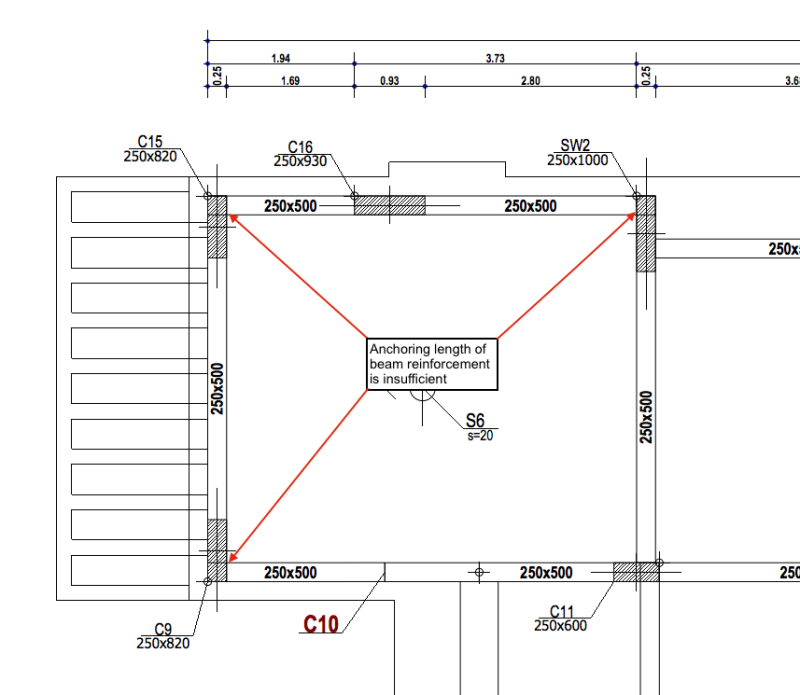kellez
Civil/Environmental
- Nov 5, 2011
- 276
HI,
So i have a Reinforced Concrete Structure with beams, columns and slabs.
Columns and shear walls are 25cm thick, therefore you can understand that at locations such as edge beams there is lack of anchoring length for the RC beam reinforcement.
Please see picture for examples of edge beams with lack of anchoring.
Lack of anchoring results in the bars not being able to utilise their full bending resistance capacity.
Whereas the provided reinforcement is adequate for the bending moment in middle the bending resistance of the bars at the edges is considerable reduced due to lack of anchorage.
I have seen many houses being erected in the past year and none of the engineers used any kind of measure to increase anchorage resistance at edge beam locations.
Now that I am actually doing my first structural analysis and design for an RC Frame I have come across this issue and i am just wondering how did the other engineers overcome this?
or could they have not seen it or could they have just ignored it?

So i have a Reinforced Concrete Structure with beams, columns and slabs.
Columns and shear walls are 25cm thick, therefore you can understand that at locations such as edge beams there is lack of anchoring length for the RC beam reinforcement.
Please see picture for examples of edge beams with lack of anchoring.
Lack of anchoring results in the bars not being able to utilise their full bending resistance capacity.
Whereas the provided reinforcement is adequate for the bending moment in middle the bending resistance of the bars at the edges is considerable reduced due to lack of anchorage.
I have seen many houses being erected in the past year and none of the engineers used any kind of measure to increase anchorage resistance at edge beam locations.
Now that I am actually doing my first structural analysis and design for an RC Frame I have come across this issue and i am just wondering how did the other engineers overcome this?
or could they have not seen it or could they have just ignored it?

